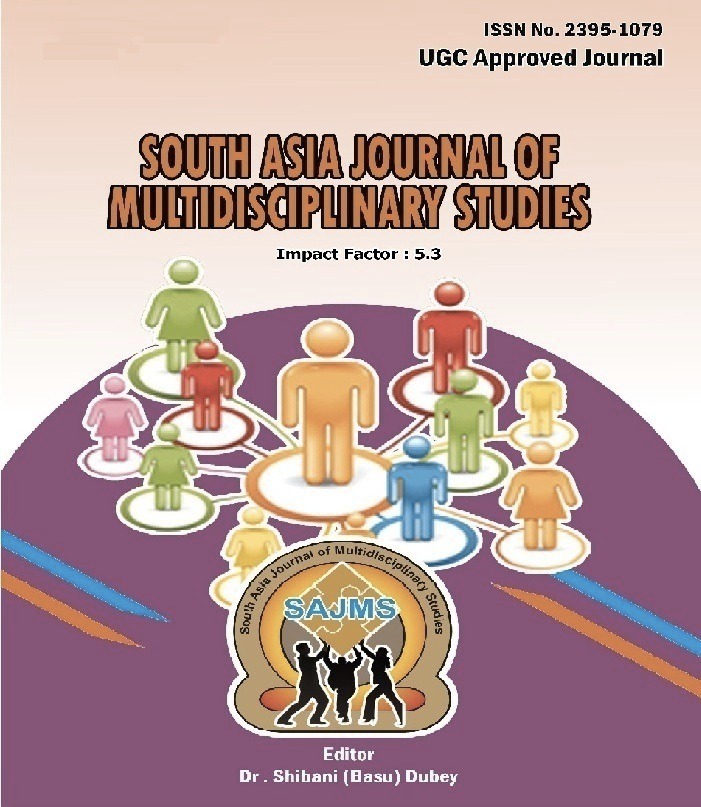NUTRITION AND ITS IMPACT FOR PROLONGED LIFE
Keywords:
Energy, Diet, Nutrition, Food, vitamins, Minerals.Abstract
Long life is a blessing; this concept is an essential component to fulfill that desire. People are filled with limitless desires running on the land of combination of time and energy. Time means length of life and manifestation of desires in between. How long we can run is decided by the energy and our source of energy is our food. Our body is made of mixed diet. When we study the combinations of energy of food and its best tuning with nature of energy of a person is called nutrition. Diet leads our behavioural approach. There are three types of behavioral approach called Prakriti. Diet is also divided in these three categories (Satwik food, Rajsi and Tamsic food) and contains the entire essential food constituent in correct proportion to fulfill particular prakriti. Supportive attitude of energy of food is called good nutrition value, which plays an important role in maintaining our physical, mental and spiritual health. If the relation between demand of body and supply of nutritional value is contradictory then destructive energy is activated instead of supportive or constructive energy in our body. This distraction breaks the flow of energy which becomes the cause of many diseases. These diseases grasp our energy and so we cannot run for a long time on the path of life. But good and healthy eating habits can help us stay healthy for a long time. Three types of diets are described by ayurveda in the reference of good eating habits for healthy and long life namely, nitahaar, pathya and apathya. Dimension of the energy of essential food constituents are carbohydrate, protein, fats, vitamins, minerals and water. A balanced diet typically consists of fifty to sixty percent carbohydrates, twelve to twenty percent protein and thirty percent fat. All organs and tissues require proper nutrition to function effectively by consuming the right amount of nutrients and calories to maintain an ideal weight. This paper will cover all the aspects that help to improve health and well-being with proper nutrition.References
? Klieman L, Hyde S, Berra K. Cardiovascular disease risk reduction in older adults. J
CardiovascNurs. 2006;21(5 Suppl 1):S27-S39.
? Andrawes WF, Bussy C, Belmin J. Prevention of cardiovascular events in elderly
people. Drugs Aging. 2005;22(10):859-876.
? Fraser GE, Shavlik DJ. Ten years of life: Is it a matter of choice? Arch Intern Med.
;161(13):1645-1652.
? Sullivan, R. J. (1993). Accepting death without artificial nutrition or hydration. Journal of
general internal medicine, 8(4), 220-224.
? Young, E. A. (1983). Nutrition, aging, and the aged. Medical Clinics of North
America, 67(2), 295-313.
? Floud, R., Fogel, R. W., Harris, B., & Hong, S. C. (2011). The changing body: Health,
nutrition, and human development in the western world since 1700. Cambridge
University Press.
? Ilich, J. Z., &Kerstetter, J. E. (2000). Nutrition in bone health revisited: a story beyond
calcium. Journal of the American college of nutrition, 19(6), 715-737.
? Robinson, S., &Fall, C. (2012). Infant nutrition and later health: a review of current
evidence. Nutrients, 4(8), 859-874.
? Lunn, P. G. (2000). The impact of infection and nutrition on gut function and growth in
childhood. Proceedings of the Nutrition Society, 59(1), 147-154.
? Young, V. R. (1978). Nutrition and aging. Pharmacological Intervention in the Aging
Process, 85-110.
? Boyd, L. D., & Madden, T. E. (2003). Nutrition, infection, and periodontal
disease. Dental Clinics, 47(2), 337-354.
? McNaught, C., &MacFie, J. (2015). Ethics and nutrition. Clinical Nutrition, 161-175.
Downloads
Published
Issue
Section
License
Submission Preparation ChecklistSubmission Preparation Checklist
Before proceeding with your submission, please ensure that you have completed the following checklist. All items on the list must have a checkmark before you can submit your manuscript:

